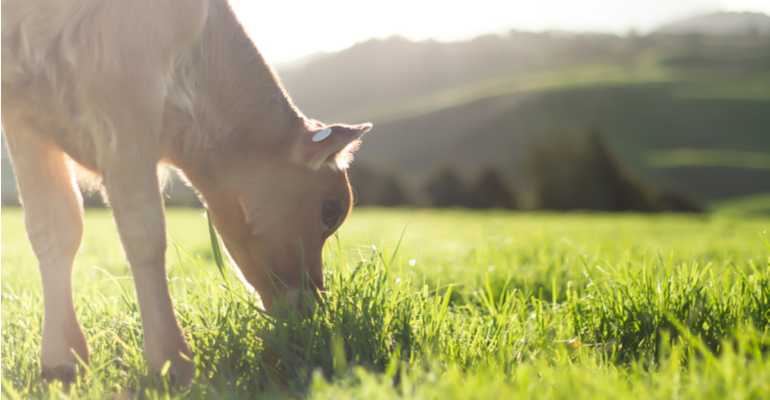The Rate is calculated by the ratio between the number of calves weaned divided by the number of cows exposed within a given livestock period. Some more productive indicators report that this relationship can reach 79.1%, taking into account gestational losses and calf mortality within the same period evaluated.
Weaning is the removal of the calf from contact with the cow, usually between the 7th and 9th month of age. During this period, an animal is already ruminant and is fully capable of using solid forage as the only source of energy and nutrients it needs. In addition, the participation of milk in the calf's diet is small after the third month of lactation.
“Weaning can be done in different ways, according to the farmer's intentions and can occur at different times in the calf's life, depending on the management carried out on each property. However, for this period not to be critical and / or cause losses, it is necessary to plan ahead. Only then, there will be an efficient weaning with calves that reach good weight ”, explains the veterinarian and manager of Technical Services at Biogénesis Bagó, Reuel Gonçalves.
Still according to the manager, one of the recurring problems during the lactation phase and which can influence the development of the calf, for example, are neonatal diarrhea. To avoid this disease, the indication is to have a preventive vaccination in the cow 60 and 30 days before calving, against Escherichia coli J5 and Rotavirus (G6 and G10). This measure will help to lower neonatal diarrhea rates in the first 35 days of the calf's life, in addition to promoting excellent development, ensuring a healthier calf and, consequently, with a better weight until weaning.
It is worth remembering that at the birth of the calf there is the navel healing stage, when 10% iodine (“burning” of the umbilicus) must be used in the management, mosquito repellent, in addition to the application of 1.1% doramectin to prevent installation of a myiasis.
Between 60-90 days, the producer must pay attention to effective prevention against diseases that can harm or cause mortality in cattle. This is the time to vaccinate against clostridiosis - indicated a vaccine with 8 strains + the E. coli J5 strain - and, if the region is endemic for rabies, it is essential to apply the rabies vaccine, with reinforcement 30 days later of the first dose and use of simple, unconjugated Fluazuron pour-on.
Gonçalves warns that between three and eight months, females, calves, should also receive B19 vaccine against brucellosis, a disease that, in addition to economic losses on the property, is a zoonosis and has official control.
Desvermination
The veterinarian and coordinator of Technical Services of Biogénesis Bagó, João Paulo Lollato advises that the producer can take advantage of the handling, with 90-120 days, to deminer the animal with a concentrated dewormer. “If it is a rainy season, when there is a challenge to fight endo and ectoparasites, there is an indication to administer a concentrated Ivermectin (3.15%), which works with long action. If it is in the dry season, with only the challenge of combating internal parasites, one can have as an ally the concentrated levamisole phosphate (23.63%) ”, points out.
Lollato points out that supplementing with injectable minerals, based on organic Copper and Zinc, at this stage effectively helps the development of animals, positively influencing immunity.
After this first management, of dose and reinforcement of vaccinations, already around seven / nine months, preferably before weaning, the recommendation is that a third dose of vaccinations against clostridiosis be carried out (with 8 strains + E. coli J5 strain for prevention of diarrhea), rabies vaccine and again the application of long-acting vermifuge. “This is because if the animal is sent to a breeding management, it can go up to four months without having to return to a corral management. At this time, the application of injectable supplementation with Organic Zinc and Copper is also indicated, which will assist in immunity and minimize the stress that this animal will pass during the weaning period ”, adds Lollato.
The beef cattle farmer should consider weaning mainly targeting the cow, so that she can recover her body condition in order to give birth and become pregnant soon, considering that a productive and profitable cow is one that supplies the farm with a calf a year.
“Therefore, the success of weaning begins with an excellent nutritional program for cows and calves, mineral and vitamin supplementation together with a complete vaccination and antiparasitic program so that the animal does not show an immune drop and manifestation of diseases, due to the stress of this management” , concludes the Technical Services Coordinator at Biogénesis Bagó.
Registre-se para fazer download desse recurso
Registrar-se como membro da Agrishow lhe dá acesso a conteúdo premium incluindo webinars, whitepapers e muito mais.
Baixar
